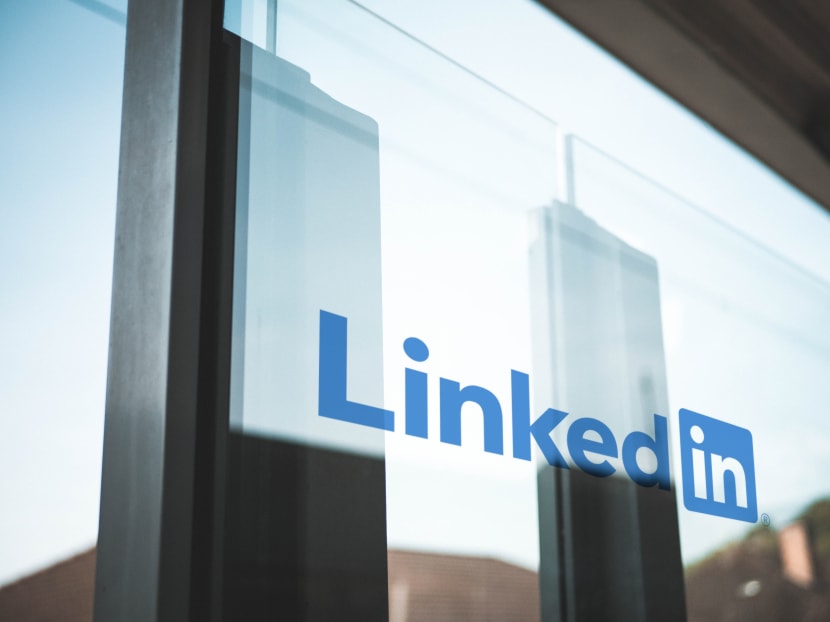Jobs, spies, lies and dormant ties — navigating the world of LinkedIn
Dickson loved LinkedIn. He checked the professional social network almost every day for new contacts. It was “almost like an addiction”, he said.

LinkedIn says it takes action to enforce its policies, which outlaw “fraudulent activity with an intent to mislead or lie to our members”.
Dickson loved LinkedIn. He checked the professional social network almost every day for new contacts. It was “almost like an addiction”, he said.
Bill was also a fan. It’s “a very good site”, he said. “A great venue [and] the ultimate playground for collection” of contacts.
Bill and Dickson are not part of each other’s networks, though.
Bill Evanina is the director of the United States National Counterintelligence and Security Center. He was referring, in a 2018 interview with Reuters, to China’s “super aggressive” attempts to target senior intelligence and law enforcement officials via LinkedIn.
Dickson Yeo, on the other hand, is in custody in the US awaiting sentencing for acting as an illegal foreign government agent, having admitted working for Chinese intelligence.
He used LinkedIn to harvest information from intelligence experts. China has accused the US of hyping up the “espionage issue”.
LinkedIn says it takes action to enforce its policies, which outlaw “fraudulent activity with an intent to mislead or lie to our members”. This activity predated the pandemic.
Still, the Yeo case popped into the news just as I was wondering whether to relax my longstanding policy of only linking to people I have met in person.
Many of those impromptu meetings used to happen at conferences: A handshake, a brief chat, an exchange of business cards. Back in the office, I’d scan the card and usually send or accept a LinkedIn invitation.
Even if, as I believe, face-to-face conferences have a post-Covid future and other greetings will replace the handshake, I am starting to think that the days of swapping viral particles via the interchange of cardboard rectangles are over.
If almost all my work is now conducted virtually, why not also accept approaches from people who would simply “like to connect”?
To backtrack, I was an early adopter of LinkedIn in 2004, only because my colleague John Gapper was writing about it and realised he would have to connect with at least one person to try it out.
Later LinkedIn awarded me a badge as one of the UK’s first million members. There are now 29 million. It has proved an invaluable tool for research and for broadcasting my own work.
But I have not had any direct job offers or pursued any jobs. I don’t endorse people’s skills. I rarely recommend contacts for their work.
LinkedIn seems to be coming into its own now, living up to the old joke that only people losing their job would update their profile.
Users rose by 16 million to 706 million in the past quarter. LinkedIn detected a 50 per cent increase in public posts in March compared with the year before and a 55 per cent jump in private messaging.
After spotting that people were signalling they were “open to work” by altering their headline job title, the site created a photo frame that would advertise individuals’ availability.
Some 1.25 million users have added the frame to their profile in the past two weeks. At the same time, the platform shows 11 million vacancies.
“There are jobs; there are millions of people looking for jobs,” says Kiran Prasad, vice-president for product at the Microsoft-owned group.
The question is: “Are the skills you have equal to the skills people are trying to hire?”
LinkedIn hopes eventually that a combination of recommendations, endorsements, assessments and interactions will make it easier to bridge this skills gap, matching jobseekers with jobs.
Meanwhile, online networking could also help job-hunters.
As well-cited research by Daniel Levin, Jorge Walter and Keith Murnighan suggests, if you are searching for advice — and perhaps also career opportunities — reviving “dormant ties” to people you used to know can be more useful than tapping current contacts.
If only I could remember how, when and why I made some of my LinkedIn connections, that could come in handy.
As for forging fresh ties, Yeo told US law enforcement officials that the “relentless” LinkedIn algorithm had a knack of suggesting appropriate connections.
It also points out mutual links to users, which may help encourage new contacts to click “Accept” after receiving an invitation from someone they do not recognise.
Once connected, contacts can use private messages to strike up a discussion, for good or ill.
Mr Prasad declined to discuss the Yeo case, but when it comes to everyday lies and exaggerations, he believes because people treat LinkedIn as part of the work environment, they are “as honest as they are at work and as civil as they are at work”.
Or as dishonest, he might have added.
At any rate, in answer to my question about whether to relax my online networking rules in these exceptional times, he was adamant that the guidance has not changed.
Only link to someone “if you know them and you are willing to help them”. FINANCIAL TIMES
ABOUT THE AUTHOR
Andrew Hill is an associate editor and the management editor of the Financial Times.






